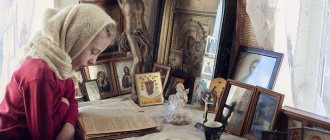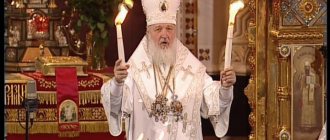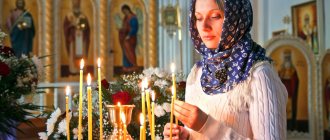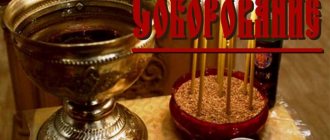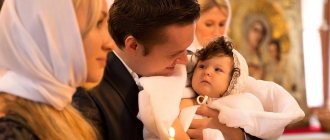Explanations of Church Evening Worship
In ancient times, this was the name for a special prayer that lasted all night and ended at dawn. The symbolism of the vigil is traditionally associated with the words of the Lord about the need to “watch and pray,” as well as with the expectation of the Second Coming.
The monks
Subsequently, such services began to be performed in monastic monasteries. It is believed that he was one of the first to introduce the all-night vigil into the Rule of St. Savva the Sanctified. The monks of his monastery spent the entire week in prayerful solitude, coming to the general service only on the eve of Sundays and holidays. Therefore, they wanted to nourish their souls as much as possible with joint prayer, and the service lasted all night.
Useful materials
Charter for the laity
The service has been known in the Russian Church since the 14th century. Then the so-called Jerusalem Liturgical Rule, which goes back to the tradition of the monastery of St. Savva. Since the parish liturgical Charter did not exist in Rus', monastic vigils became a property of secular churches. Subsequently, the practice arose of shortening this service, which, if held according to the Charter, would last at least 8 hours.
Modern Ministry
Nowadays, in parish churches, vigils are also celebrated only in the evening on Saturdays, as well as on the eve of holidays. This is a particularly solemn service that differs from the usual evening service:
- longer prayers;
- obligatory anointing of believers with oil;
- reading prophetic and apostolic writings dedicated to the celebrated day.
The service usually starts at 5 or 6 pm. In many churches, before it begins, the Sacrament of Confession is held, which, depending on the number of confessors, can continue until the end of the service, and if there are a large number of people, even after its completion.
Start of service
A quarter of an hour before the start of the service, the main bell rings, followed by a festive ringing of all the bells. This is how Christians are called to church for a festive service. Those who arrive early enjoy the sound of the bells. The central gate of the iconostasis opens, which tells us about the beginning of the service.
Incense takes place in the altar, one of the priests fumigates with incense. A deacon with a candle walks ahead of him. Everything is done in complete silence, only the soft clinking of the chains of the censer can be heard.
Upon completion, a deacon appears from the Royal Doors and loudly proclaims: “Arise!” This call to those in the temple has been preserved to this day from ancient Christian worship. At that time, the monks, before the start of the service and at some moments of it, sat on chairs specially designed for this purpose, which were called stasidia. This tradition has been preserved to this day in Greek churches, on Holy Mount Athos, as well as in Catholicism and Protestantism. This did not take root in Russian churches. There are always a lot of people here and there is not enough space even to just stand.
Beginning of ministry
What parts does the All-Night Vigil consist of?
In most temples it includes:
- Vespers;
- Matins;
- Follow-up 1 hour.
Before major holidays, the service may be supplemented by:
- lithium;
- the consecration of bread, wine, oil, with which the believers are then anointed.
The symbolic content of the service is a remembrance of the path of humanity from the Creation of the world to the Incarnation, preaching, death and Resurrection of Christ, as well as God’s economy of salvation for people.
Vespers
The vigil begins with the praise of the Triune God, the Holy Trinity. Then, while the choir sings Psalm 103, glorifying the world created by the Lord, the priest censes the temple, walking around it in a circle. This symbolizes the Lord Himself, who walked in the Paradise planted by Him during the time of Adam.
How to behave correctly during censing?
In most parishes, believers at this moment try to step aside, giving way to the priest.
There are also different opinions about whether during censing one should turn after the priest walking around the temple. The charter does not contain any explanation on this issue, since it was assumed that the monks - for whom it was written - pray during the service in stasidiums, high chairs in which one can either stand or sit. They were located along the walls of the temple, respectively, the priest burned incense for each monk.
Modern pastors give different recommendations:
- Priest Sergius Savenkov, on the pages of the magazine “Foma,” states that there is no need to “twirl” behind the censer, a small bow is enough, as an expression of humility.
- there is also an opinion that it is ungodly to turn your back to the altar, so you should pray while censing with your face turned to it;
- and here is prot.
Konstantin Parkhomenko thinks differently: “The fact is that the problem of turning your back to the altar is completely far-fetched. Clergymen turn their backs to the altar many times during the service. I think that making a problem out of the fact that a person turned his back to the altar to bow... during censing is extreme. But there are no such laws, these are all customs.”
In any case, during censing, it is not customary to make comments about the “wrong” behavior of others. The grace conveyed through the burning of incense should be received with due reverence.
All-night vigil
After censing
The Royal Doors are closed, symbolizing the loss of Paradise after the retreat from God. Subsequent prayers, chants, readings - repentance of those who have sinned, expectation of salvation. Among them:
- litany before the closed royal doors;
- excerpts from the Old Testament (proverbs).
After songs dedicated to a holiday or Sunday, the gates open. When singing “Quiet Light of Holy Glory...” the evening entrance takes place.
The service ends:
- prayer rights Simeon the God-Receiver “Now you are releasing your servant...”; the elder pronounced it, taking into his arms in the Jerusalem Temple the Child brought there according to the Law;
- a hymn glorifying the Mother of God, “Virgin Mother of God, rejoice...”
Matins
This entire service is dedicated to Jesus Christ, His Nativity, earthly life, death, and Resurrection. That is why the first words of the service are the angelic chant that the shepherds heard on the night of the Birth of the Messiah: “Glory to God in the highest...”
But after this festive hymn, the candles in the temple are extinguished. In the darkness, the reading of the Six Psalms begins - 6 psalms of King David, in which there is repentance, expectation of salvation, blessing of God.
Monk Trofim (Tatarnikov), one of the three monks of the Optina Monastery who were killed on Easter 1993, once said about the Six Psalms to a monastic worker who intended to leave the temple on business: “Don’t leave now. It’s better to leave earlier or later, but you can’t go out on the Six Psalms, the Six Psalms is the Last Judgment.”
The central moment of the service is the Gospel of the Sunday or holiday, before the reading of which the church incense again follows.
After this, the Canon dedicated to the holiday, Sunday, celebrated saint is read (most often several canons are combined).
The service ends with the Great Doxology, with which Christians greet the new day. The following sequence of the first hour is devoted to the same thing.
First hour: end of service
At the end of the service, the doxology of the Holy Trinity is heard. The priest reads “dismissal” - a blessing to leave the service. The choir sings many years to the ruling church hierarchs, the rector of the temple, and parishioners. All the gates on the iconostasis are closed, the church chandeliers go out. Finally, parishioners listen to the prayers of the First Hour - the end of the All-Night Vigil is coming. The spoken psalms (5, 89, 100) recall the loss of paradise by the first parents, as well as the morning time when Jesus was brought to the court of Caiaphas. Here Christians pray to God for help in the affairs of the coming day.
The 1st hour ends with the glorification of Christ as “... the true light that enlightens every person...”. Then the priest venerates the image of the Mother of God and the choir sings “To the Elected Victorious Voivode...”. The dismissal is pronounced again, but this time it is brief. Three times from the choir one can hear “Lord, have mercy...”. Believers go outside and head home. Everyone feels as if they were born again, carrying with them the Grace of God in their souls.
Detailed explanation of the All-Night Vigil in the video:
Divine Liturgy: what it is and how it happens - with explanations
The most important service for every Christian is preceded by the third and sixth hours. The psalms and prayers read on them recall the events of the Lord’s earthly life, His Crucifixion, and prepare everyone who comes to the temple, to the main Sacrament of the Church.
The beginning of the liturgy is the exclamation of the priest: “Blessed is the Kingdom of the Father and the Son and the Holy Spirit” marks the coming Kingdom of God, which now, according to the word of the Lord, “is within” (Luke 17:21) for everyone who loves God.
"Catechumens"
This is the ancient name of this part of the service, which has survived to this day. This part of the Liturgy is prayers to which those preparing for Baptism, those who have “acknowledged themselves”, were allowed to attend, that is, those who have already recognized the teachings of Christ, but are not yet members of the community.
These preliminary prayers include:
- litanies - short petitions for peace, country, “powers and armies”, for all those to come;
- antiphons, psalms sung alternately by two choirs (in the practice of worship there can be one choir);
- hymn “Only Begotten Son and Word of God...”; its composition is attributed to the Byzantine emperor Justinian the Great;
This is followed by the singing of the third antiphon. But if the first two are psalms, then this song is taken entirely from Christ’s Sermon on the Mount and contains the Beatitudes. During this time, the Entrance with the Gospel takes place in the presentation of a candle.
Then the hymns of the day, the holiday, and one of the most ancient hymns of the Church - the Trisagion, addressed to the Holy Trinity - are sung. They are preceded by the reading of Scripture: the Apostle and the daily Gospel.
The last prayer is for those preparing for Baptism, after which the deacon exclaims: “Catechumens, come forth!”
Interesting fact
Now prayers for the catechumens are read, as many say, according to tradition, since the institution of catechumens is not accepted in the Church. In the Greek Church these prayers are completely omitted. However, modern altar servers in Russia often say that “catechumens” can be considered sympathizers who accidentally entered the church, and therefore prayers for them should not be removed from the service. Some lay people say that at this moment they try to pray for their unbelieving relatives, friends, and their conversion to God.
Holy Sacrament
"The Faithful"
Then the sacrament of the Eucharist itself begins. It is preceded by the so-called Cherubic Hymn - not so much a prayer as a call to the faithful to become like the Angels, to put aside everything earthly. Accompanied by this singing, the liturgical vessels are transferred in a solemn procession from the altar to the holy altar.
After Cherubim the priest cannot interrupt the service for any reason.
1
May
1497
In the life of St. Makaria, Met. Kievsky, there is such an episode: during the service of the liturgy, he learned about the approach of the Tatar detachment, but did not leave the church until the end of the service. The saint was killed by infidels who broke into the temple.
At the end of the Cherubic Song in ancient times, the sacrament of Baptism was performed. This practice dates back to the singing of the Creed by Christians. Nowadays this has a slightly different meaning: evidence of firm trust in God.
Anaphora
This is the most important, mysterious part of the service, the name of which is translated as “ascension.” At this moment, believers are called to intense prayer and attention. The Anaphora is otherwise called the Eucharistic Canon. It includes four priestly prayers read at the altar. During the third of them, calling on the Holy Spirit, the “transformation” of bread and wine into the Body and Blood of the Lord takes place mysteriously, unknown to the mind. This is the culmination of the entire service, the main miracle of Christianity, surpassing all others.
Right John of Kronstadt says:
“The Divine Liturgy is the axis of the world: just as wheels can only move around an axis, so our world can move, having the Divine Liturgy. She is the basis of all life in the world. And if it were not for this, our terrible, sinful world would have perished and collapsed from uncleanness and lawlessness, if it had not been sanctified by these Great Mysteries, the terrible appearances of the Divine Redeemer. At this moment, the Throne is consecrated, and the temple, and all those praying are consecrated; the earth, the air itself, gives a person everything necessary for life only because the Holy Lamb, our Jesus Christ, reclines on the Throne, on the paten and in the Chalice under the guise of wine and bread.”
Participle
After the Anaphora, the Communion of the clergy is celebrated first, which takes place in the altar with the gates closed and the curtain drawn. During Easter and Holy Week, the gates are open so that believers can see how the Sacrament is performed.
Sometimes during Priesthood Communion the gates are opened on other days. For example, after the unification of the Russian Church and the Russian Orthodox Church Abroad, the first joint service of Patriarch Alexy II and Metropolitan Laurus on May 17, 2007, at the request of parishioners, took place entirely with the royal doors open.
Then comes the Communion of the laity. Usually accepted:
- approach with your hands folded crosswise, with your right hand on top;
- clearly state your baptized name;
- do not make the sign of the cross in front of the Chalice, so as not to touch it with a careless movement.
Before Communion, Confession is necessary, since the sacrament for a person burdened with sins is performed as a condemnation. Communion without confession in the practice of the Russian Church is possible only for frequently confessing laity, and then with the special blessing of a priest who knows well the spiritual state of the communicant.
